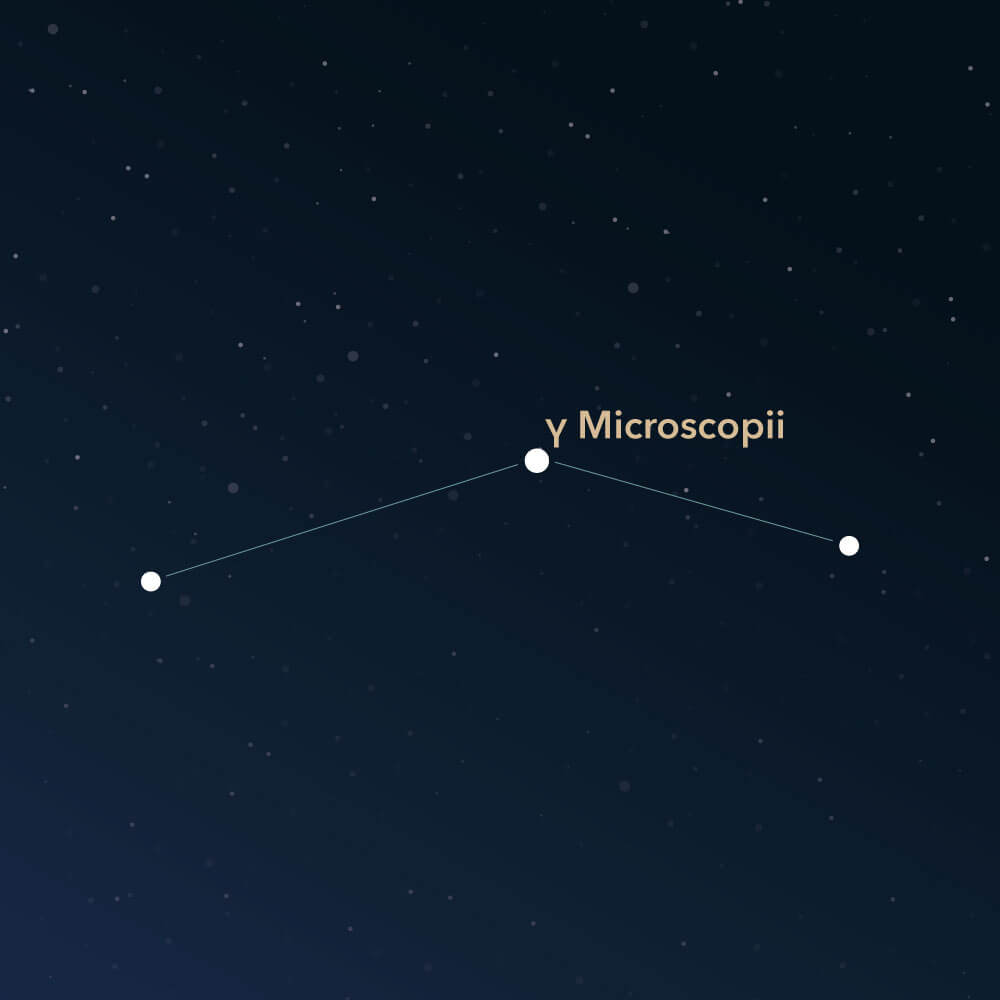The constellation Microscopium
Caractéristiques
- Nom latin
- Microscopium
- Hémisphère
- Hémisphère sud
- Visibilité
- July - September
- Région
- 210 deg²
- Étoile la plus brillante
- γ Microscopii (HIP number 103738)
- Spécialités
- Galaxies

The Microscopium, Latin for Microscope, is an inconspicuous and small constellation in the southern celestial hemisphere. It was defined by Nicolas Louis de Lacaille in the 18th century and contains only a few interesting deep-sky objects for observation.
Hemisphere, visibility, and area
The constellation Microscopium is located in the southern sky and can be seen from the entire southern hemisphere. However, north of the equator, it is only fully visible up to the 45th parallel. This corresponds to regions such as Milan in Italy or Montreal in Canada.
The best time to observe the constellation is from July to September. In northern regions, it is low on the horizon during this time.
It covers an area of about 210 square degrees, making it the 66th largest constellation out of all 88.
The visual representation of Microscopium varies in star charts. Often, only three stars are connected to form a line. In other depictions, additional stars are included, resulting in a closed, angular shape.
In both representations, the star γ Microscopii (Gamma Microscopii) is included because it is the brightest star in the constellation. It has an apparent magnitude of just about 4.7 and can only be observed in dark areas outside of illuminated cities.
The faint stars and unremarkable shape make it difficult to find Microscopium in the night sky. Therefore, it can be helpful to orient oneself to the adjacent constellations.
To the north and east, the two astrological constellations, Capricornus and Sagittarius, border Microscopium. To the south, there is the Indus, while to the west, there are the Grus and the Piscis Austrinus. Additionally, the Telescopium lies southeast.
Specialties in the constellation
In the area of the constellation are some galaxies as well as galaxy clusters, which, however, only become visible in large telescopes.
One of the galaxies is the spiral galaxy NGC 6925. It has an apparent magnitude of roughly 11.3 and appears as an upright galaxy in astronomical photographs. The distance to the Milky Way is estimated to be around 127 million light-years. The German-British astronomer William Herschel discovered NGC 6925 in July 1834, and in July 2011 a supernova lit up in the galaxy.
History
In the mid-18th century, the French astronomer Nicolas Louis de Lacaille measured the positions of over 10,000 stars with the invention of the telescope. At that time, he was located near Cape Town in South Africa.
During his work, he found that some areas of the sky were not adequately defined. He took this as an opportunity to introduce new constellations. The inspiration for the names was always innovative devices from science and art.
He first introduced the microscope with the French name "le Microscope" and later changed it to the Latin spelling that is commonly used today.
PubliéLire d'autres articles intéressants

An overview of all 88 constellations
Learn more about all 88 constellations and read interesting information about the mythology, visibility, and features.

Application Planétarium
Découvrez le ciel nocturne avec notre application de planétarium !
Disponible pour iOS et Android.

Nommez une étoile dans la constellation Microscope
Name a star in a constellation and create something that lasts for eternity.